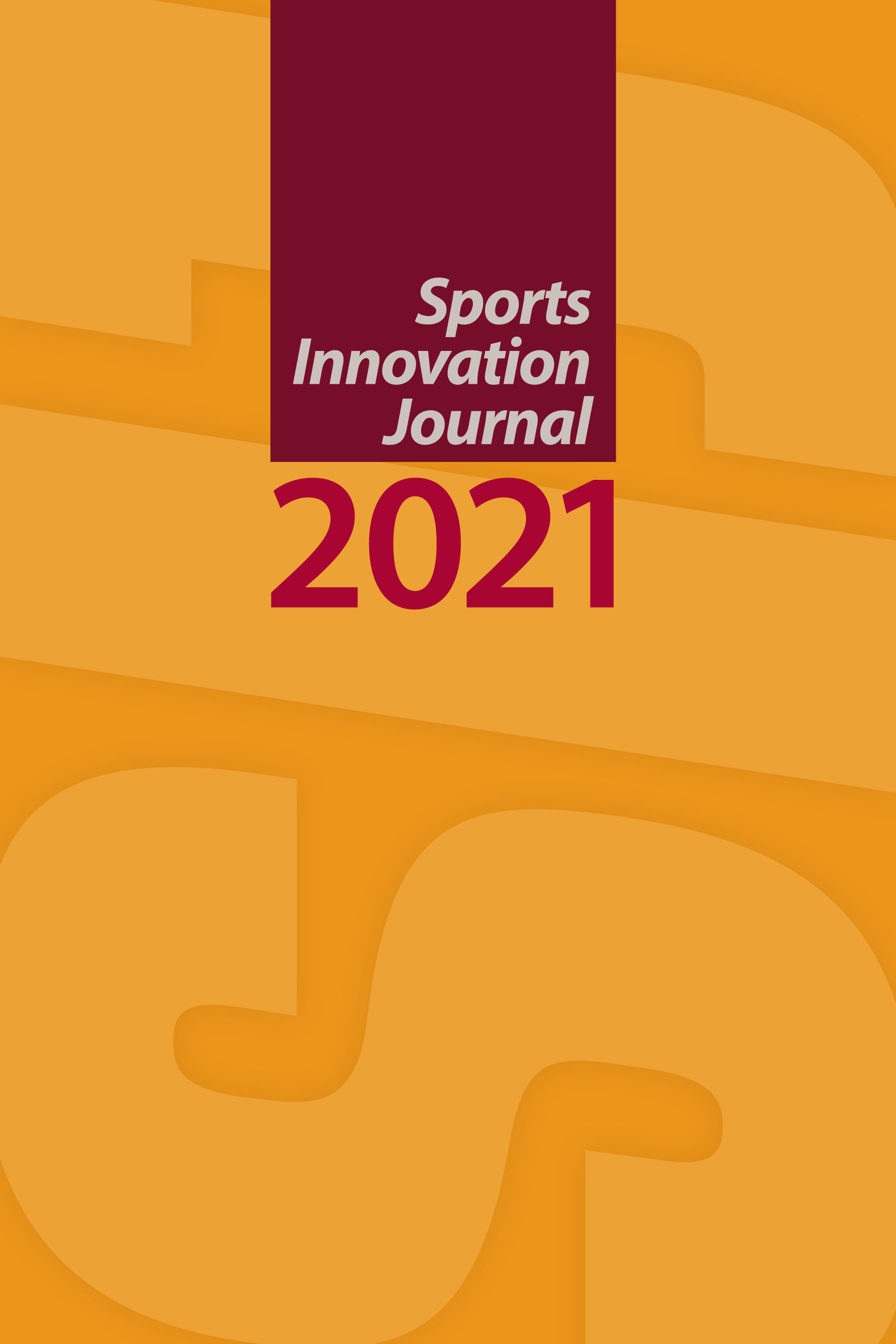Accuracy of an Experimental Accelerometer for Assessing Countermovement Vertical Jump Height
DOI:
https://doi.org/10.18060/24831Keywords:
sport, testing, performance, technology, sport scienceAbstract
While force plate technology is the gold standard for assessment of many aspects of vertical jump performance, its cost is prohibitive to a broad spectrum of the population. Accelerometry may be more practical, inexpensive, and provide a simple solution that allows hands-on practitioners to readily assess vertical jump performance acutely and over time. Thus, the purpose of this study was to examine the accuracy of an experimental accelerometer for testing vertical jump heights derived from flight times when compared to a laboratory-based force plate system as a criterion measure. Fifteen subjects performed three sets of three nonconsecutive maximal countermovement vertical jumps while standing on the force plate. The accelerometer device sampling at 100 Hz was placed on the anterior abdomen immediately inferior to the umbilicus and secured with an elastic band. Both devices recorded the data simultaneously. The experimental accelerometer was an appropriate tool for the assessment of vertical jump height; however, it significantly overestimated actual vertical jump heights by an average of 3.1 cm. This consistent discrepancy in the measurement may be easily fixed by a simple algorithm correction and should not present an issue in the practical setting where ease of use and the ability to provide immediate feedback regarding an athlete’s performance is of critical importance.
References
Buckthorpe, M., Morris, J., Folland, J.P. (2012). Validity of vertical jump measurement devices. Journal of Sports Sciences, 30(1), 63-69. https://doi.org/10.1080/02640414.2011.624539
Carlock, J.M., Smith, S.L., Hartman, H.J., Morris, R.T., Ciroslan, D.A., Pierce, K.C., Newton, R.U., Harman, E.A., Sands, W.A., Stone, M.H. (2004). The relationship between vertical jump power estimates and weightlifting ability: a field-test approach. Journal of Strength and Conditioning Research 18(3), 534-539. doi:10.1519/R-13213.1.
Castagna, C., Ganzetti, M., Ditroilo, M., Giovannelli, M., Rocchetti, A., Manzi, V. (2013). Concurrent validity of vertical jump performance assessment systems. Journal of Strength and Conditioning Research, 27(3), 761-768. https://doi.org/10.1519/JSC.0b013e31825dbcc5.
Çakir-Atabek H. (2014). Relationship between anaerobic power, vertical jump and aerobic performance in adolescent track and field athletes. Journal of Physical Education and Sport 14(4), 643-648. doi:10.7752/jpes.2014.04100.
Gómez-Carmona, C.D., Bastida-Castillo, A., Ibáñez, S.J., Pino-Ortega, J. (2020). Accelerometry as a method for external workload monitoring in invasion team sports. A systematic review. PloS one, 15(8), e0236643. doi:10.1371/journal.pone.0236643.
Grainger, M., Weisberg, A., Stergiou, P., Katz, L. (2020). Comparison of two methods in the estimation of vertical jump height. Journal of Human Sport and Exercise, 15(3), 623-632. https://doi.org/10.14198/jhse.2020.153.12.
Heredia-Jimenez, J. & Orantes-Gonzalez, E. (2020). Comparison of three different measurement systems to assess the vertical jump height. Revista Brasileira de Medicina do Esporte, 26(2), 143-146. http://dx.doi.org/10.1590/1517-869220202602185305.
Hoffman, J.R., Epstein, S., Einbinder, M., Weinstein, Y. (2000). A comparison between the Wingate anaerobic power test to both vertical jump and line drill tests in basketball players. Journal of Strength and Conditioning Research 14(3): 261-264.
Howard, R., Conway, R., Harrison, A.J. (2014). Estimation of force during vertical jumps using body fixed accelerometers. 25th IET Irish Signals & Systems Conference 2014 and 2014 China-Ireland International Conference on Information and Communications Technologies (ISSC 2014/CIICT 2014), Limerick: 102-107. doi:10.1049/cp.2014.0667.
Mahmoud, I., Othman, A.A.A., Abdelrasoul, E., Stergiou, P., Katz, L. (2015). The reliability of a real time wearable sensing device to measure vertical jump. Procedia Engeniring 112(1): 467-472. doi:10.1016/j.proeng.2015.07.226.
Menzel, H.-J., Chagas, M.H., Szmuchrowski, L.A., Araujo, S.R., Campos, C.E., Giannetti, M.R. (2010). Usefulness of the jump-and-reach test in assessment of vertical jump performance. Perceptual and Motor Skills 110(1): 150-158. https://doi.org/10.2466/pms.110.1.150-158.
Monnet, T., Decatoire, A., Lacouture, P. (2014). Comparison of algorithms to determine jump height and flight time from body mounted accelerometers. Sports Engineering, 17(4): 249-259. doi:10.1007/s12283-014-0155-1.
Nedergaard, N.J., Robinson, M.A., Eusterwiemann, E., Drust, B., Lisboa, P.J., Vanrenterghem, J. (2017). The relationship between whole-body external loading and body-worn accelerometry during team-sport movements. International Journal of Sports Physiology and Performance, 12(1): 18-26. https://doi.org/10.1123/ijspp.2015-0712.
Ruben, R.M., Saffel, H., McCrory, J.L., Cormie, P., Haff, G.G. (2011). Comparison of accelerometer based vertical jump assessments to a linear position transducer plus force plate system. Journal of Strength and Conditioning Research 25: S37. doi:10.1097/01.JSC.0000395636.70853.92.
Whitmer, T.D., Fry, A.C., Forsythe, C.M., Andre, M.J., Lane, M.T., Hudy, A., Honnold, D.E. (2015). Accuracy of a vertical jump contact mat for determining jump height and flight time. Journal of Strength and Conditioning Research 29(4): 877-881. doi:10.1519/JSC.0000000000000542.
Downloads
Published
Issue
Section
License
Copyright (c) 2021 Dimitrije Cabarkapa, Andrew C. Fry, Matthew J. Hermes

This work is licensed under a Creative Commons Attribution 4.0 International License.
Copyright to articles published in Sport Innovation Journal is retained by the author(s).


